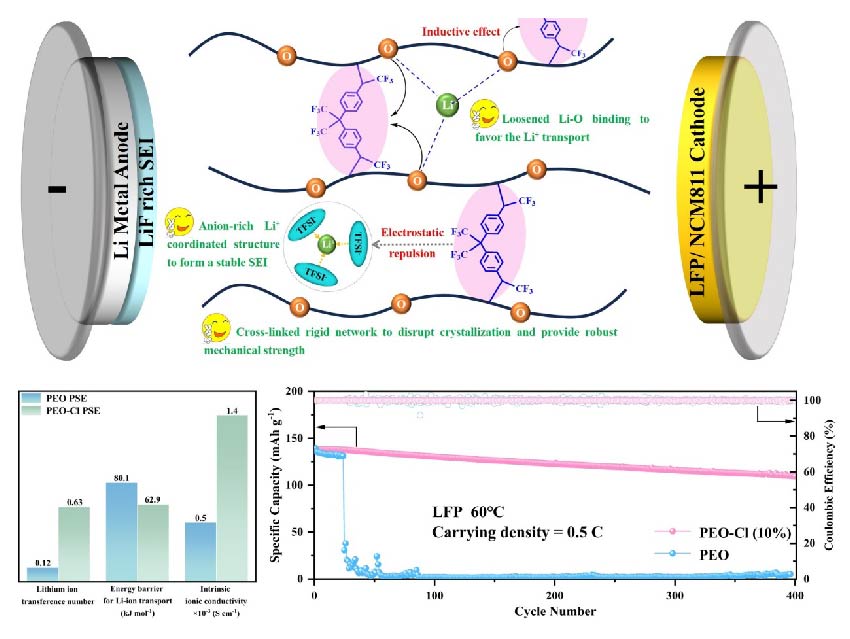Poly(ethylene oxide) (PEO) based electrolytes have garnered considerable attention in all-solid-state lithium metal batteries due to their superior safety and energy density, but they suffer from low ion conductivity and poor cycling stability. Junqiao Ding, Yunnan University, China, and colleagues designed a novel in-situ functional crosslinking strategy to overcome these limitations simultaneously. They use a two-in-one bis-diazirine molecule (C1) that serves as a rigid cross-linker, but also as an electron-withdrawing inducer.
Benefitting from such an integration of these two functionalities into a single cross-linker, a rigid PEO electrolyte network can be facilely constructed, exhibiting disrupted crystallization, robust mechanical strength, loosened Li-–O binding to boost the Li⁺ transport, and an anion-rich Li⁺ coordinateion structure to favor the generation of a stable LiF-rich solid electrolyte interface. As a result, a remarkable ion conductivity of 1.4 × 10⁻³ S cm⁻¹ is achieved at 60 ℃ together with a Li⁺ transference number of 0.63. The corresponding LiFePO₄||Li and NCM811||Li filled batteries present significantly improved rate performance and capacity retention cycling life compared with the pristine PEO electrolyte, highlighting the great potential of in-situ functional crosslinking for high-performance all-solid-state batteries.
- In-Situ Functional Crosslinking Enables Facile Construction of Rigid Poly(Ethylene Oxide) Network for High Performance All-Solid-State Batteries,
Liang Shan, Bitian Chen, Yunhan Hu, Xiangqin Gan, Han Si, Yongqi Wang, Zhaojun Chen, Yiyong Zhang, Yinbo Zhou, Liming Ding, Junqiao Ding,
Aggregate 2025
https://doi.org/10.1002/agt2.70117



